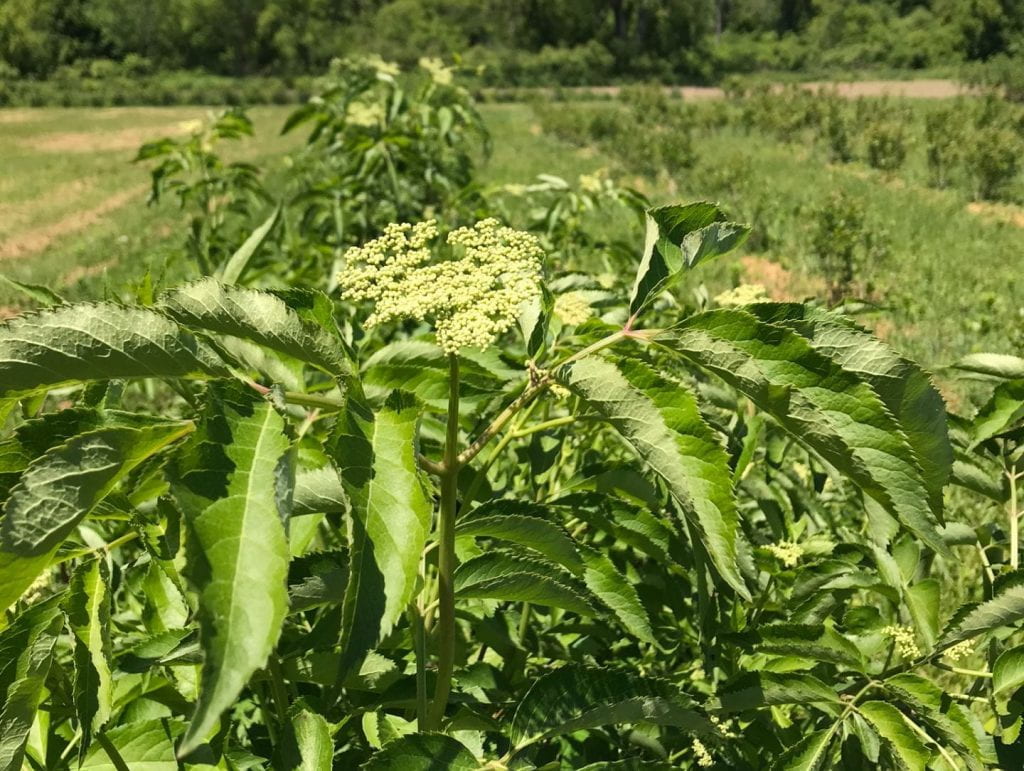by Esther Kibbe and Laura McDermott
Strawberries: early varieties are ripening. Retail markets and U-pick fields are opening. Demand is reported to be very strong and prices have been strong. Fruit size is smaller than normal, partially due to primary flowers being damaged in cold, may also be related to dry conditions. Later varieties look to have better size, but irrigation will be important to achieve this if it stays dry. At the same time, sunny, dry weather should contribute to lower incidence of fruit rots and encourage you-pick visitors to come out, if that is your marketing strategy. Fungicides may still be necessary if you get rain or heavy dews. Check ripening berries for dark or soft spots just under the calyx -this is early gray mold developing. I’m also seeing a lot of misshapen berries. Some are likely tarnished plant bug damage, but

cold damage is probably the culprit in field with minimal pest pressure. TPB damage usually damages the tip end of the berry, while frost damage causes the entire berry to be malformed.
Pest sightings: strawberry aphids, tarnished plant bugs, spittle bugs, flea beetles, cyclamen mite damage, slug damage, springtails. Two spot spider mites above threshold in several plantings. This is to be expected given the dry weather with temperature spikes. Predator releases can be very effective even in the field. Focus release on field edges and near roadways as that is where mites tend to be. Miticides may be necessary if population is high and to keep plants healthy.
The trapping network is starting to catch larger numbers of SWD adults. They will infest strawberries, though damage on June-bearers isn’t usually as obvious as in raspberries and blueberries. Best practices include good field sanitation (pick frequently, remove all ripe/over-ripe berries), salt flotation tests to determine if fruit is infested, and managing weeds to reduce hiding places.
Blueberries: Small to medium sized green berries. Some are showing a little color already. Seeing plants with tiny berries that don’t seem to be developing – this can occur on plants that are somewhat stressed possibly from root damage that could be caused by voles or excess water or even nematodes. Growers should attempt to bring the plant back in balance by stripping fruit or removing the entire cane. Too many berries will result in extremely small fruit and very little vegetative growth will result from those branches.

Pests spotted: leafrollers, blueberry tip borer, cranberry fruitworm. There are many different labelled insecticides that provide protection against these insects. Two sprays are often required for adequate control; the first should be applied at petal fall and the second 10 days later, about 2 weeks before harvest. As berries start to ripen, SWD becomes the biggest concern. With sustained trap catches and fruit starting to color – this is the time to start protecting the plants! Be sure you have your preferred insecticides on hand, whether conventional or organic. Rotation is key, and carefully note maximum number of applications and days to harvest for each. Stay on top of irrigation to maximize fruit size.
Brambles: Late bloom to fruit set. I’m seeing some very nice crop loads developing. Tarnished plant bugs will also damage raspberries – tap fruit clusters over a white piece of paper or plastic to see what falls out. As the berries fill out and start to color they will become the most attractive host for SWD – be ready to protect your crop!
Elderberries: Tight bud stage to early bloom. This crop has few concerns besides powdery mildew, deer and bird damage.

